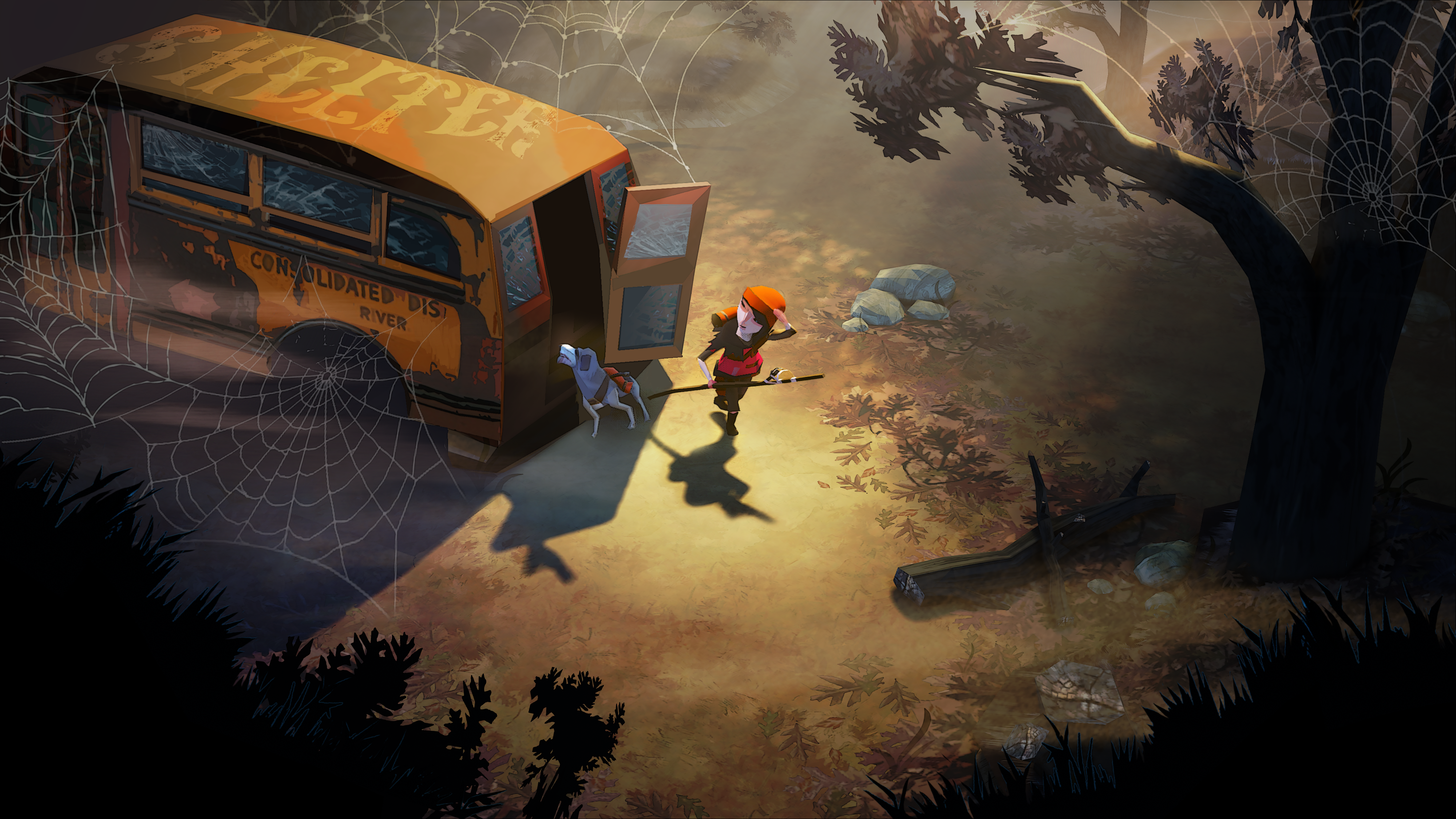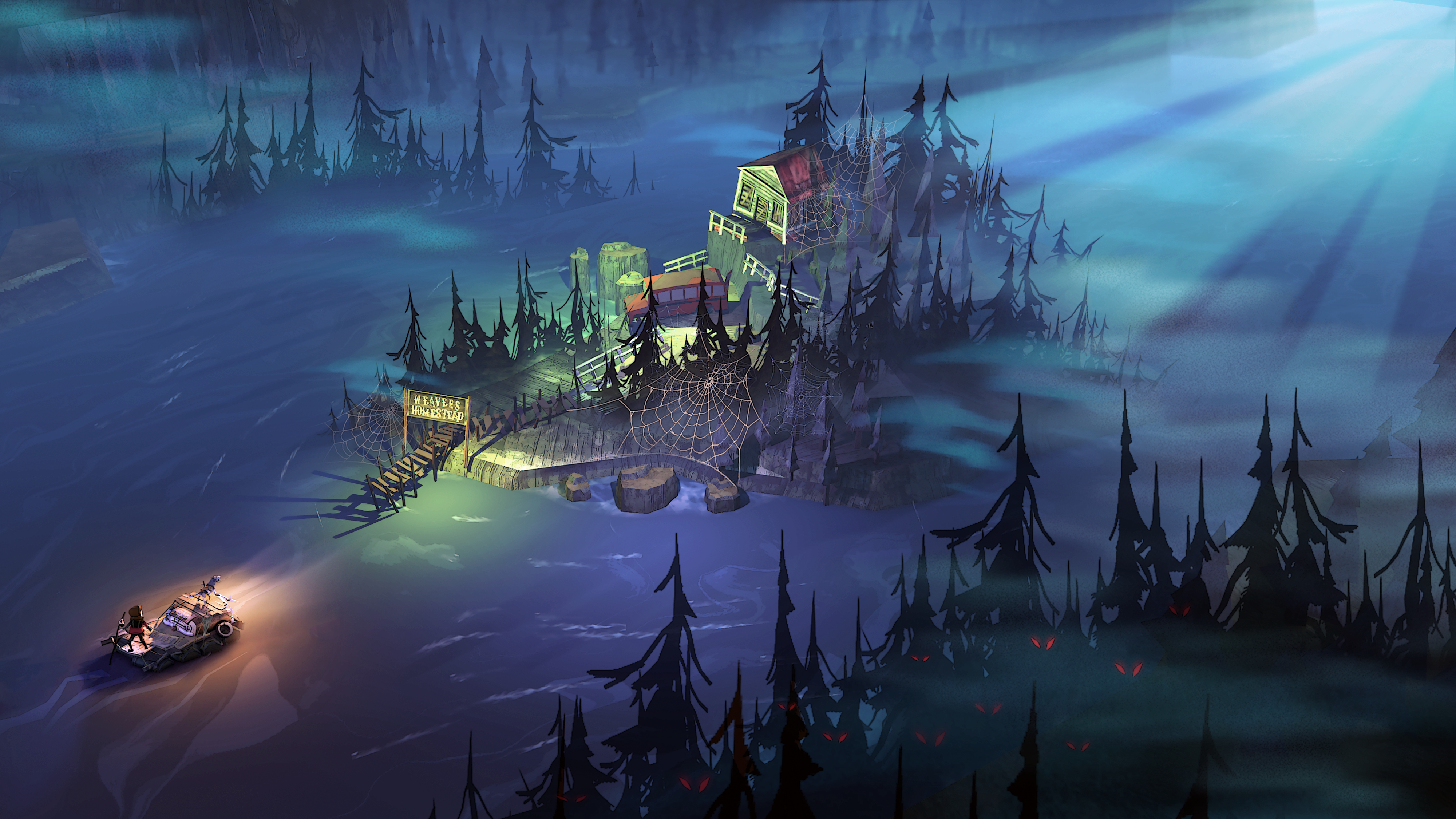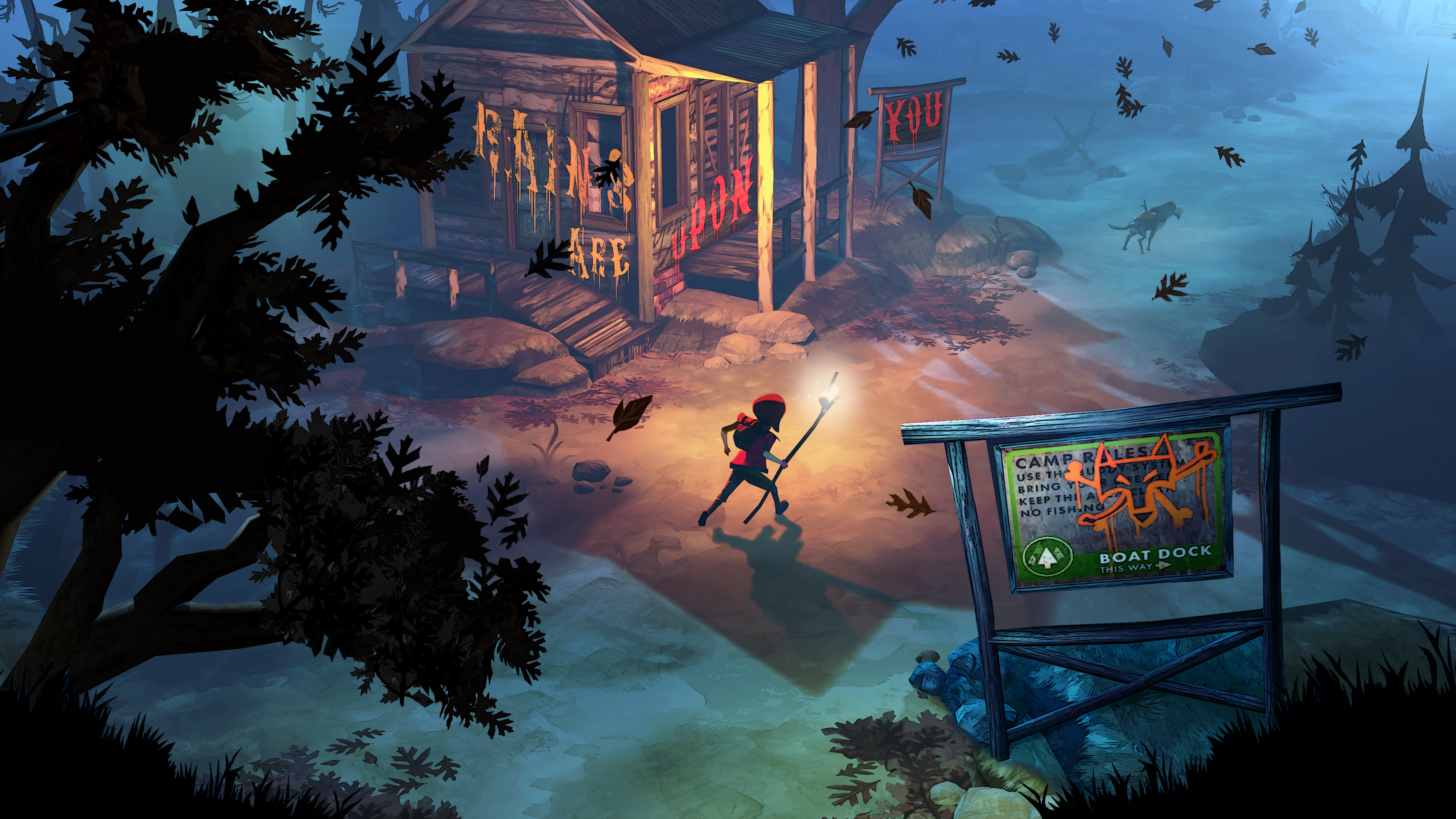The Flame In The Flood hands-on: Roguelike river survival

The Flame In The Flood is a roguelike and survival hybrid inspired by separate elements of FTL and Don’t Starve. Together, though, this combination feels like something pretty new. A girl called Scout, and her dog, Aesop, make their way down a dangerous river, trying to escape death in the midst of a coming flood. Crafting, setting traps, and finding shelter keeps Scout alive for longer. Crashing your raft into a load of rocks, or attracting the attention of a wolf while looking for somewhere to sleep, though, does not. This Kickstarter project from the minds of several former Irrational staff has a lot of potential and I got a first hands-on with it yesterday.
“The super quick version is, we wanted to make a game fundamentally about survival, and we wanted to make it about a journey,” says designer Forrest Dowling. “And we very quickly landed on the idea of the river, and the American South, and so on. Those were the initial sparks... travel, survival, very soon after, the river, then the South, just because there's such a great literary history to journeying down a river.”
I played two sessions of The Flame In The Flood’s GDC demo, which timed out at ten minutes, enough for me to understand the basics of how each playthrough differentiates. You start by a campfire, then climb onto Scout’s raft, which is the cool-looking squashed wreckage of a car. Journeying with the dog, you try to keep the raft afloat by paddling out the way of incoming rocks and other dangers. Along the way down the river, you’ll see settlements where you can dock and gather supplies. Your energy and hydration levels are always trickling down, like most of the survival games regularly finding themselves at the top of the Steam chart, and you might have to resort to desperate measures to keep them up, like drinking water you’re not sure is entirely safe.

The team at The Molasses Flood looked beyond the survival genre for influences on how to endure a harsh environment, too. "[We] look at other games for influence but also try and go to primary sources,” Dowling says. “One thing I've done a lot of research and reading on is just straight-up wilderness survival. Everything that you're finding is based on real-world survival situations and know-how.” One of the more common plants in each area, the cattail, can be used for a bunch of different real-world crafting purposes and perform similar functions in games: Scout can eat it, turn it into insulation for warmer clothing, or use the stalk as a cord for setting traps.
My first time down the river, I was doing kind of well. I set a snare trap for a rabbit on the first place I landed, then chased the poor bastard into it so I could get a good meal. I stopped off at an abandoned house and got a decent night’s rest. I got back on the boat, left, and avoided objects along the way in the hope that the next piece of land would offer equally kind circumstances. The name of each area is randomly generated, which is a cool touch, and some of the names for these areas will be decided by those who backed The Flame In The Flood's Kickstarter at higher tiers.
My second time through, my fortune was piss-poor. I crashed my raft and caused serious damage to it really early on, which seemed to make it harder to steer. The first island I landed on, I was greeted by a wolf, which is much bigger than Scout and seems to be one of the game’s primary threats. Dowling mentioned it’s pretty unlucky to encounter one this early, and at this stage in the game Scout can only temporarily ward them off. After taking damage from the creature and a having a fairly pitiful run at gathering supplies, I got back on the damaged raft and headed further downriver. A dark storm kicked off, which took a huge toll on Scout’s energy bars, and I just about made it to the end of the demo without dying of thirst. If the demo wasn't timed, though, I’d almost certainly have died moments later: there was nothing to drink and nowhere to sleep on the island. That’s the gamble you take whenever you dock.

There’s a nice promised scale to progression in The Flame In The Flood. While this is a permadeath game, you can assign items to Aesop and he can carry them for Scout into the next playthrough. With enough of the right items, you can create traps for wolves, which provide even greater components for building items than the rabbits do early on. These aren’t the only creatures in the game, either, so there’ll be more animals out there to hunt, avoid, or manipulate to help you survive.
The biggest gaming news, reviews and hardware deals
Keep up to date with the most important stories and the best deals, as picked by the PC Gamer team.
Dowling is expecting players to finish all of the content in roughly three or four hours. The success of The Flame In The Flood depends on how successfully the game randomises these various bits of the world, something that’s impossible to predict when I've only seen a few recurring buildings on each island, like gas stations and wooden houses. I enjoy the feeling of docking at a new location without knowing what threats await, similar to arriving at a new system in FTL, but with the added bonus of a little exploration, too. I look forward to stress testing these variables when The Flame In The Flood reaches its tentative summer release on Early Access.


